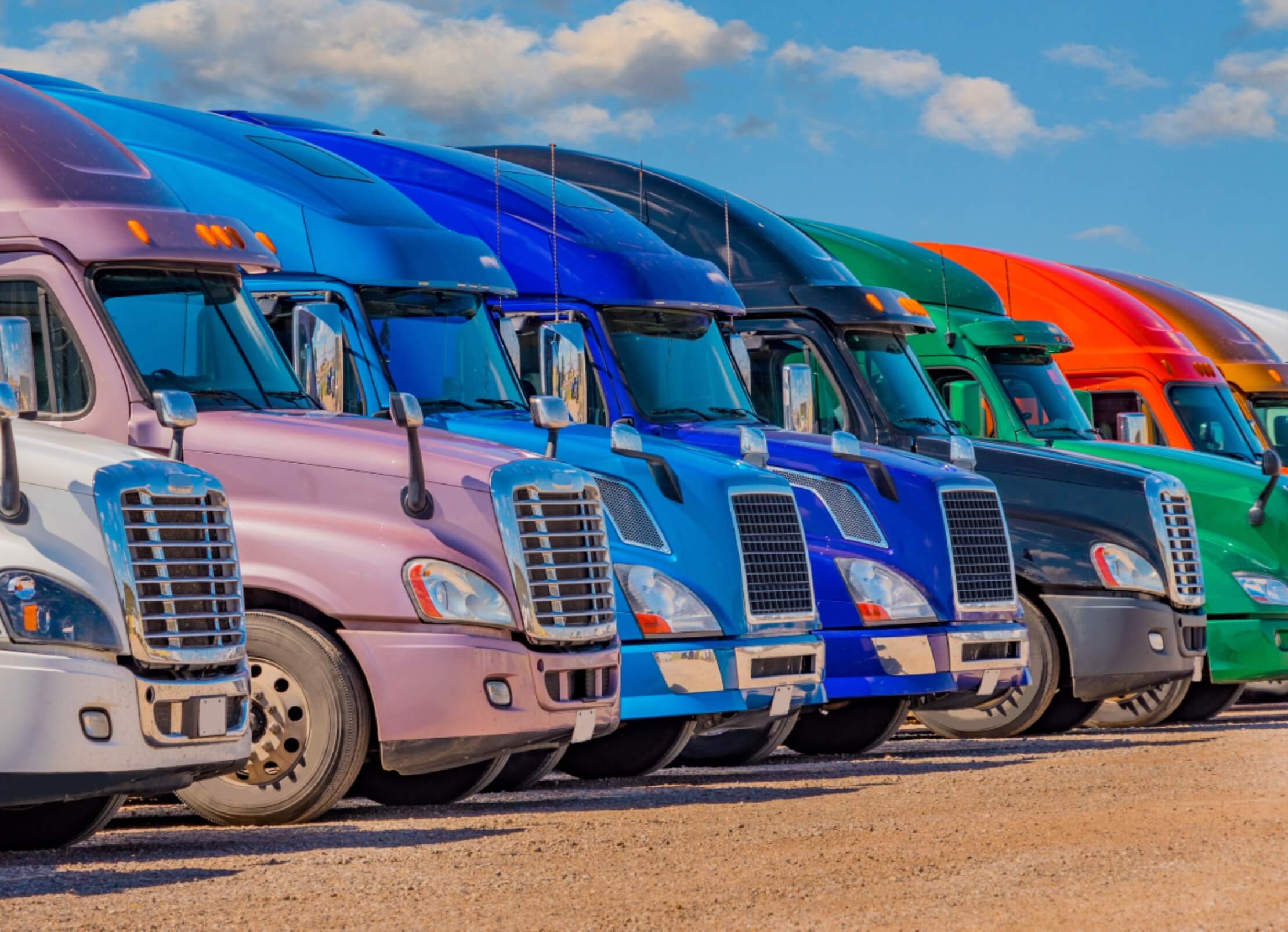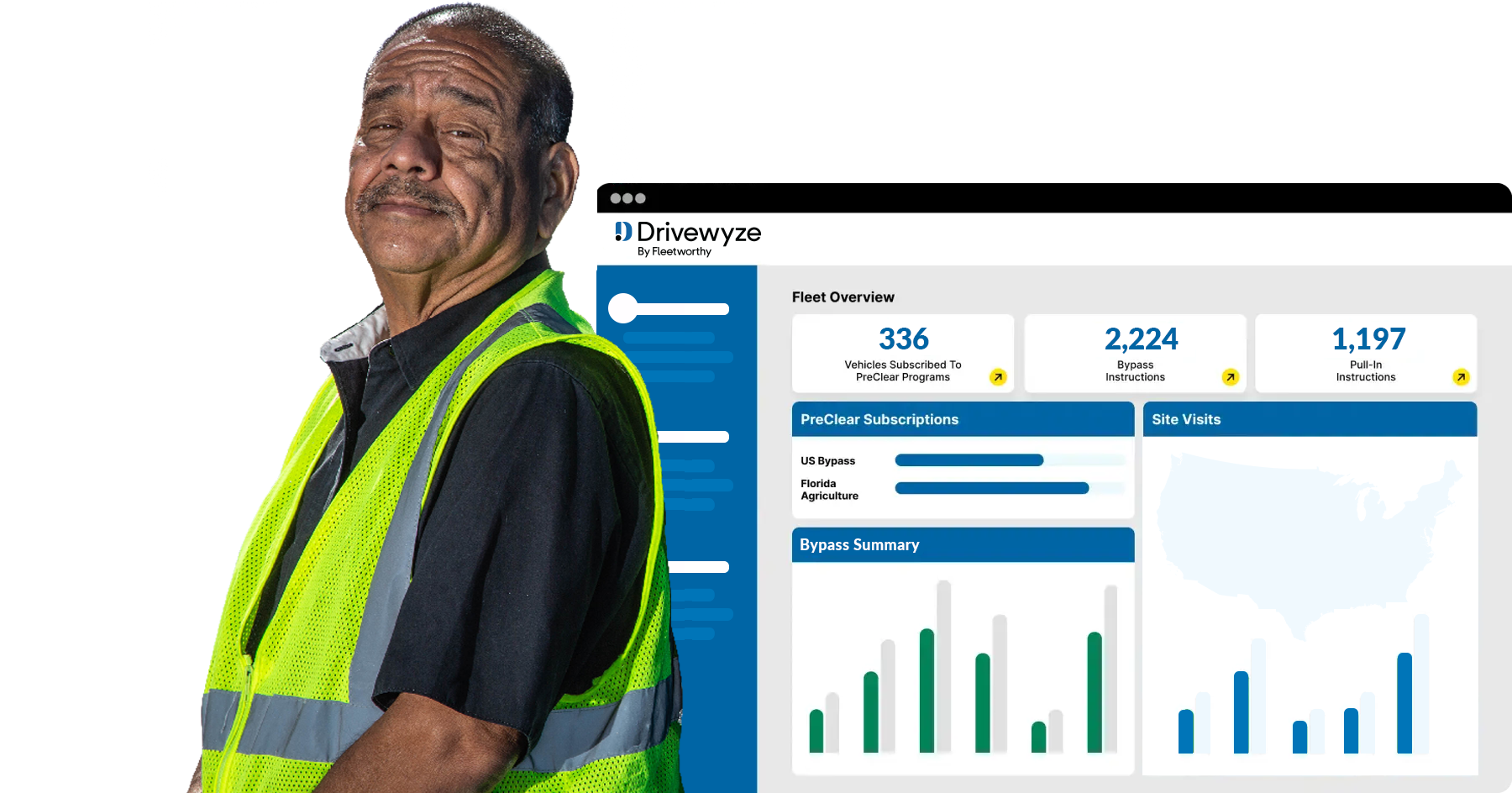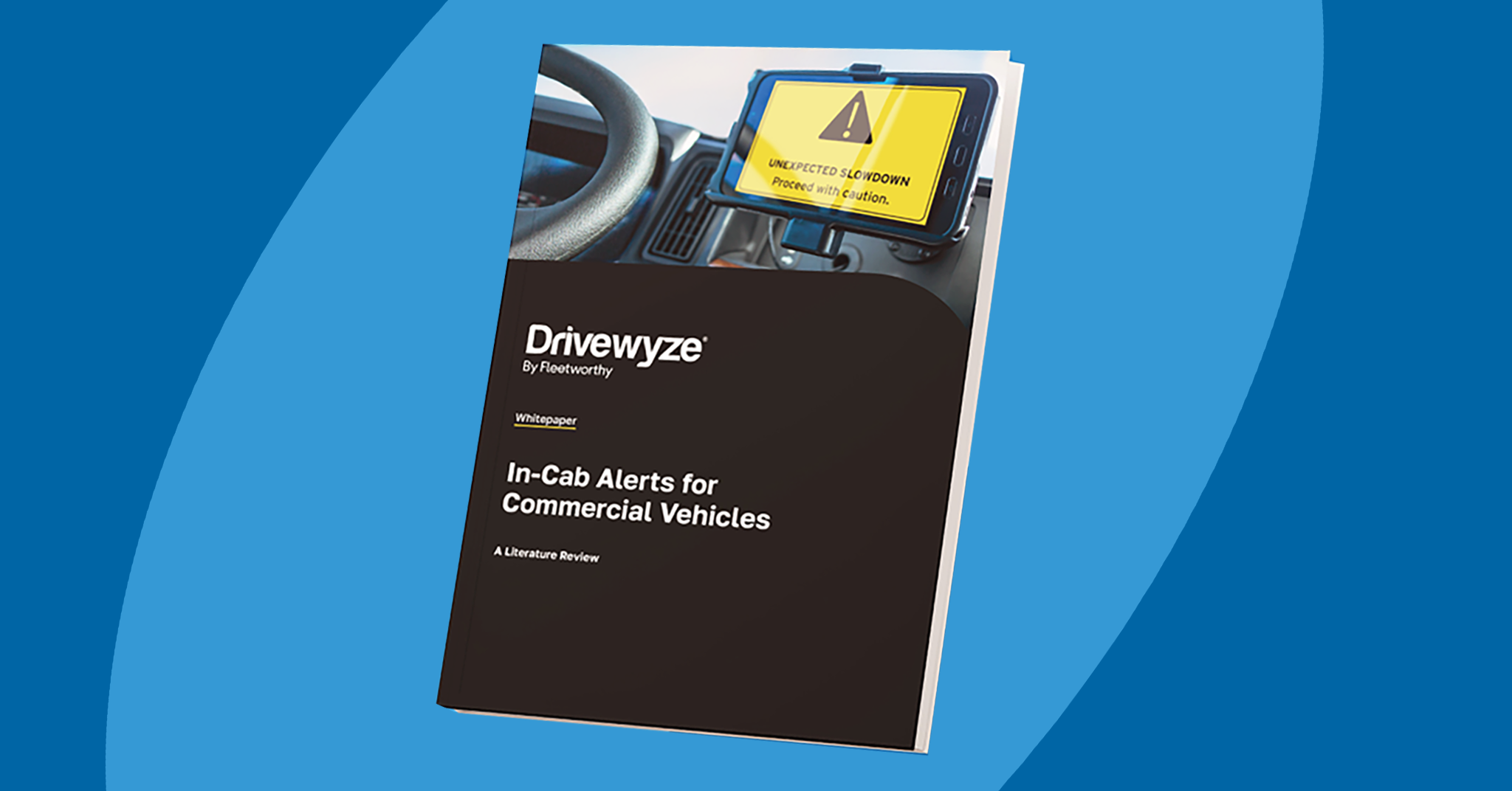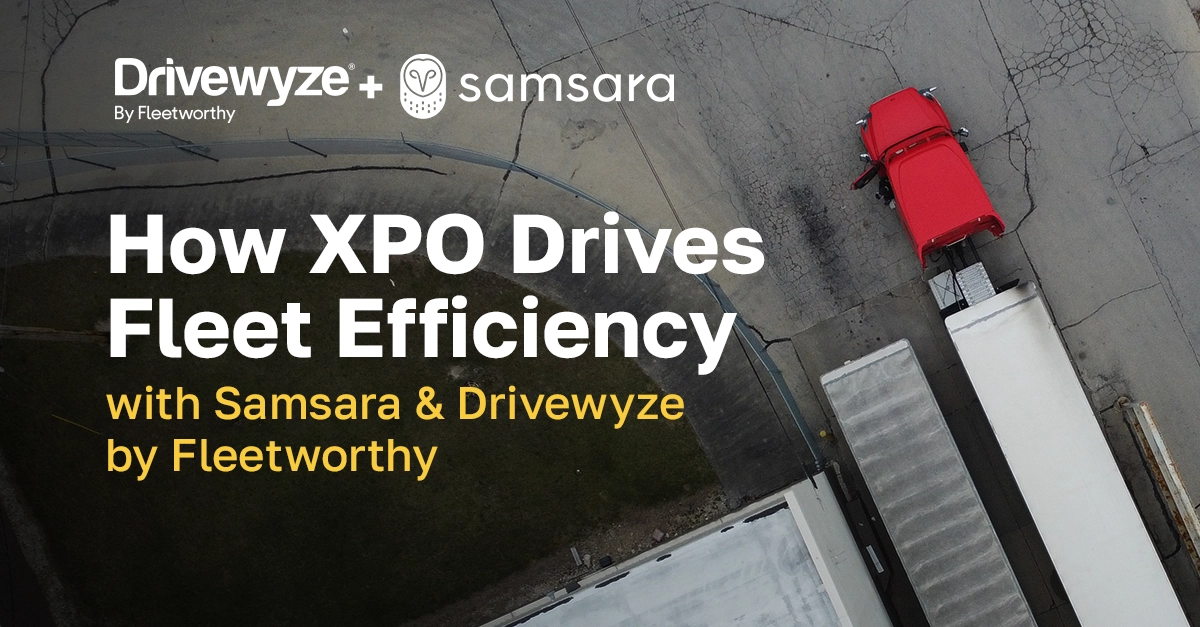The stakes for commercial fleets have never been higher. Between rising insurance premiums, increased scrutiny from regulators, and a sharp uptick in costly nuclear verdicts, even a single safety lapse can have devastating financial and reputational consequences.
At the same time, fleets face mounting pressures to retain drivers, operate more efficiently, and deliver on-time performance across increasingly complex logistics networks. In this environment, safety is no longer just a compliance checkbox—it’s a strategic priority.
More than rules, policies, or occasional safety meetings, fleet safety culture is the collective mindset, behaviors, and values around safety that shape every decision—from the cab to the back office. It’s what determines whether drivers feel supported, whether near-misses get reported, and whether proactive action is taken before small risks escalate into major incidents.
Put simply: A strong fleet safety culture isn’t optional—it’s foundational to reducing risk, protecting drivers, and ensuring the long-term health of the business.
What Is Fleet Safety Culture?
At its core, safety culture reflects what a company truly believes about safety—not just what it says in a handbook. It’s evident in how safety is prioritized, how decisions are made under pressure, and how people respond when no one is watching. In a strong fleet safety culture, safety isn’t a department—it’s a value that guides the entire organization.
While policies and procedures are important, they’re only effective when they are supported by shared values, proactive leadership, and a commitment to continuous improvement. Here are some of the key characteristics of a mature and effective fleet safety culture:
1. Driver Involvement and Empowerment
Drivers are not passive participants in safety—they are front-line leaders. A positive safety culture involves listening to driver input, providing tools for informed decision-making, and fostering a sense of shared responsibility for personal and team safety. When drivers feel empowered to speak up, suggest improvements, and take action, safety becomes a team effort rather than a top-down directive.
2. Transparent Reporting and Feedback Loops
In strong safety cultures, incidents, near-misses, and unsafe conditions are openly reported without fear of retaliation. This transparency allows fleets to identify trends early and respond proactively. Equally important is closing the loop—sharing back what’s been learned, what’s changing, and how it benefits the team. When communication flows both ways, safety becomes a conversation, not a lecture.
3. Continuous Improvement Mindset
A healthy fleet safety culture is never static. It’s built on a mindset of learning, adapting, and striving to be better. This means regularly evaluating safety metrics, revisiting policies, learning from incidents, and actively seeking out opportunities to improve—not just after something goes wrong, but as a matter of routine.
4. Technology Integration to Support Behavior, Not Replace It
Technology is a powerful enabler of safety—but it’s not a substitute for culture. Tools like real-time driver alerts, telematics, and bypass systems can guide safer driving behaviors and enhance situational awareness, but their true impact depends on how they’re integrated. In strong safety cultures, technology reinforces good habits, supports coaching, and enhances accountability—not just surveillance.
Fleet safety culture doesn’t develop overnight. It requires intentional effort, aligned leadership, and a long-term vision. But for fleets that commit to it, the payoff is clear: fewer crashes, lower costs, stronger compliance, and a safer, more engaged workforce.
The Business Case for Investing in Safety Culture
Building a strong fleet safety culture isn’t just the right thing to do—it’s a smart business strategy. For modern trucking operations facing rising costs, regulatory pressure, and driver turnover, a well-established safety culture creates tangible financial and operational advantages across the board.
Here’s how investing in safety culture delivers real, measurable ROI:
1. Collision Reduction and CSA Score Improvements
Fleets with a mature safety culture see significantly fewer accidents and safety violations. That’s because drivers are more alert, more compliant, and more proactive when safety is built into the company’s DNA. This directly contributes to better Compliance, Safety, Accountability (CSA) scores, which in turn influence FMCSA audits, customer trust, and eligibility for bypass programs like Drivewyze PreClear.
Impact: Fewer roadside inspections, less downtime, and more green lights at weigh stations.
2. Lower Liability and Insurance Premiums
Litigation from crashes—especially those involving third parties—is one of the biggest financial risks fleets face today. A strong safety culture helps prevent the types of incidents that lead to “nuclear verdicts” and claims settlements. Plus, insurance providers increasingly reward fleets that can demonstrate proactive risk management, real-time safety data, and coaching programs.
Impact: Lower annual insurance costs, fewer deductible payouts, and improved insurability.
3. Improved Driver Retention and Recruitment
Drivers want to work for companies that prioritize their safety—not just for compliance, but because they care. A visible, well-supported safety culture builds trust, morale, and long-term loyalty. It also becomes a competitive differentiator in recruiting, especially as newer generations of drivers look for employers who take a tech-forward and people-first approach.
Impact: Lower turnover rates, reduced onboarding costs, and a stronger employer brand.
4. Enhanced Operational Predictability and Uptime
Safety culture reduces the number of unpredictable events—like crashes, violations, and out-of-service citations—that can derail schedules and impact delivery timelines. With fewer disruptions, fleets can operate more efficiently, improve planning accuracy, and deliver consistent service to customers.
Impact: Fewer delays, optimized routes, and stronger customer satisfaction.
5. Real-World Results: Drivewyze Safety+ in Action
One large national fleet using Drivewyze Safety+ saw a 27% reduction in speeding events within 90 days of rolling out proactive in-cab safety alerts. By delivering real-time notifications at known high-risk zones, the fleet was able to change behavior before violations or incidents occurred—without increasing driver workload or creating friction.
Result: Reduced speeding, improved driver compliance, and greater confidence in the fleet’s safety strategy—all without additional hardware or time-consuming manual oversight.
A strong safety culture transforms safety from a cost center into a competitive advantage. Fleets that invest early, lead from the top, and support their drivers with data and tools are the ones best positioned to thrive in a demanding and high-risk industry.
Strategies to Build and Sustain a Safety-First Culture
Creating a strong fleet safety culture doesn’t happen overnight—it requires a strategic, consistent, and cross-functional approach. It starts at the top, but it’s sustained through daily decisions, frontline behaviors, and a shared belief that safety is non-negotiable.
Here are five essential strategies for building and maintaining a safety-first culture that drives long-term results:
1. Leadership Buy-In: Make Safety a Core Value, Not a Compliance Task
Safety culture begins with leadership. When executives and fleet managers treat safety as a strategic priority—not just a regulatory box to check—it sets the tone for the entire organization. This means allocating resources to safety initiatives, actively participating in safety discussions, and modeling the behaviors expected from drivers and staff alike.
Leaders should ask:
- Are we talking about safety in every ops meeting?
- Do our KPIs reflect safety outcomes alongside financial metrics?
- Are we recognizing safety wins with the same energy as revenue growth?
Culture starts when safety is baked into the mission—not bolted on.
2. Empower Drivers with Real-Time Safety Alerts
Drivers are at the center of safety culture. By equipping them with real-time, context-aware alerts—such as those delivered through Drivewyze Safety+—fleets give drivers the information they need to anticipate and avoid risk in the moment.
These in-cab notifications can include:
- Upcoming high-risk curves
- Steep grades or brake check areas
- Sudden slowdown zones
- Speeding hotspots
- Dangerous intersections
Empowering drivers with proactive, non-disruptive guidance turns technology into a safety partner, not a watchdog.
3. Data Transparency: Use Insights to Coach, Not Punish
The fastest way to erode trust is to use data punitively. In a safety-first culture, data should be used as a tool for learning and coaching, not discipline.
Fleet managers should use dashboards and safety trends to:
- Identify training needs
- Recognize improvement over time
- Spotlight positive behavior and safety champions
- Guide supportive conversations—not blame games
By focusing on behavioral trends over isolated events, fleets can build a culture of improvement, not fear.
4. Invest in Ongoing Training and Peer Recognition
Safety isn’t a one-time event—it’s a daily commitment. That’s why training programs should be continuous, engaging, and relevant. Consider incorporating:
- Microlearning sessions focused on specific scenarios (e.g., merging safely, handling fatigue)
- Refresher modules on new regulations or tech tools
- Peer-to-peer coaching and mentorship
Equally important is recognition. Celebrating safety milestones—such as months without incidents or outstanding safety decisions—reinforces the behaviors you want to see and helps safety become part of the culture’s identity.
5. Integrate Telematics and In-Cab Tech with a Coaching Mindset
Modern telematics and safety tech offer a wealth of insight—but only if used strategically. When paired with a coaching framework, tools like Drivewyze, ELDs, dashcams, and route analytics can help managers understand context, not just outcomes.
Effective integration means:
- Aligning tech tools with safety goals (e.g., reducing hard braking or speeding events)
- Training managers to interpret data constructively
- Ensuring drivers understand how tech supports—not replaces—their judgment
The goal isn’t to micromanage; it’s to provide early visibility into risk and enable better decisions.
Together, these strategies create a culture where safety becomes second nature—embedded in processes, reinforced by leadership, supported by technology, and lived out by every team member.
Ready to Transform your Fleet Safety Culture from Reactive Compliance to Proactive Success?
Drivewyze Safety+ delivers real-time, in-cab alerts empowering drivers to anticipate risks, reduce incidents, and strengthen your organization’s commitment to safety. Whether you’re optimizing efficiency through Drivewyze PreClear weigh station bypass or proactively identifying risks with Drivewyze e-Inspection, each software-first solution integrates smoothly into your existing telematics platforms to foster safer behaviors and drive measurable results.
Connect with Drivewyze today and build the forward-thinking safety culture your fleet deserves.

Ready to Get Started?
Learn how North America’s leading carriers use Drivewyze to save money and improve safety.





